The Oculus Quest was a game-changer when it was released in 2019, but like with any first-generation product, it had its flaws. Oculus looks to address those issues in the Oculus Quest 2, offering a refined design, incredibly detailed display, impressive processor and versatility frankly unmatched by any other VR headset on the market right now, and it’s even cheaper this time around too.
If you’ve been waiting for the VR market to mature before buying a headset, that wait may very well be over.
Design
The Oculus Quest 2 doesn’t represent a reimagining of the standalone headset, instead offering a refined design that addresses many complaints about the original.
The Quest 2 is reminiscent of the original, complete with the same minimal aesthetic, but Oculus opted for a light grey finish this time around compared to the black of the original. It certainly makes for a nice changed compared to the dark colour scheme of most VR headsets available right now, but how clean the white fabric of the headstrap will stay over time is yet to be seen.
More importantly, the Quest 2 is smaller than the original, and a little lighter too. The bulk of the original was one of the biggest complaints, weighing in at 571g, but the Quest 2 has shaved off 68g, now weighing in at 503g. It may not sound like a lot, but it is noticeable over longer periods of play, with less of a pressure build-up around the eyes and head where the headset comes into contact with your face. It’s also generally smaller – around 10 percent smaller than the original in fact, measuring in at 191.5 mm x 102 mm x 142.5 mm.
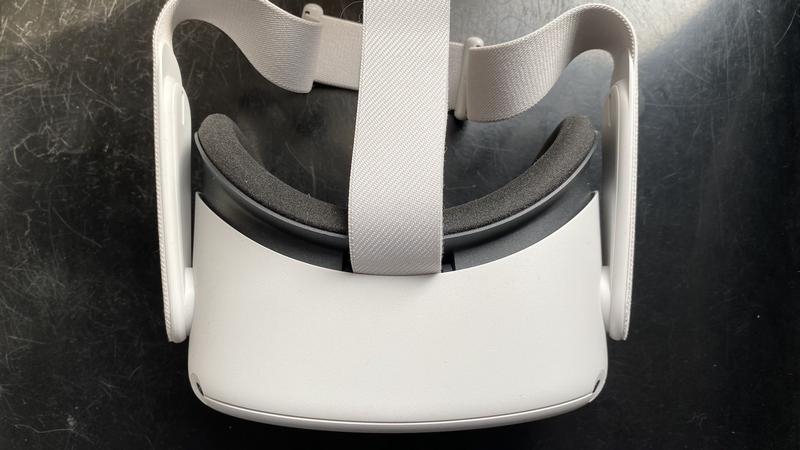
As well as being more comfortable to wear, it makes the Quest 2 more portable than its predecessor, and replacing the original rubber strap for a fabric one makes it even more compact. However, a number of Quest 2 users experienced skin irritation with the foam system, forcing Oculus to bundle a silicone cover in the box that fits over the foam interface.
One of the biggest draws of standalone VR headsets is that you don’t need to be tethered to a PC, so a smaller form factor encourages you to take the Quest 2 out and about on your travels.
That new strap system is designed to be simpler and more comfortable, making it easier for first-time VR users to get the best fit possible.
As seasoned VR users know, a great fit is crucial for a detailed visual experience – even a slightly loose headset will likely make visuals look blurred and suffer from chromatic aberration.
In order to simplify the experience, Oculus ditched the side strap adjustments in favour of two plastic sliders that sit at the rear of the headset. Bringing the sliders closer together or further apart will loosen and tighten the headset, and that does make things a lot easier. There’s still a standard Velcro strap on the top of the headset, but adjusting one is much simpler than adjusting three.
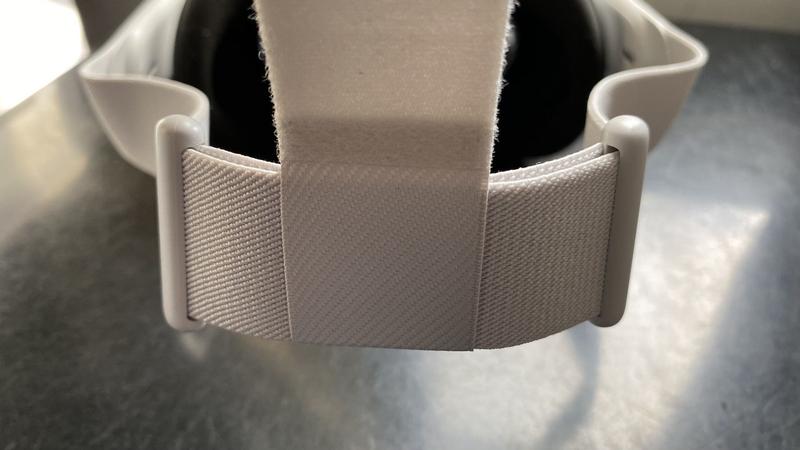
Oculus also boasts that the new strap system is more flexible than the original, accommodating all kinds of hairstyles and head shapes, but with relatively short hair, that’s not really a problem I’ve ever had with the Quest.
Like the original, the Quest 2 sports invisible speakers built into the sides of the headset, and they work just as well this time around. In fact, there seems to be a slight improvement to overall audio quality and volume, and spatial audio effects are noticeable too. Don’t get me wrong, it’s not the same as wearing headphones, but it’s a much simpler solution and allows you to communicate with those around you if you’re in a social setting – as long as you don’t have the volume up too high, anyway.
Otherwise, the Oculus Quest 2 is similar to its predecessor; it features a USB-C port and headphone jack, although the latter has been moved to the side of the headset, and there are four front-mounted cameras to help with positional tracking too, albeit slightly smaller this time around.
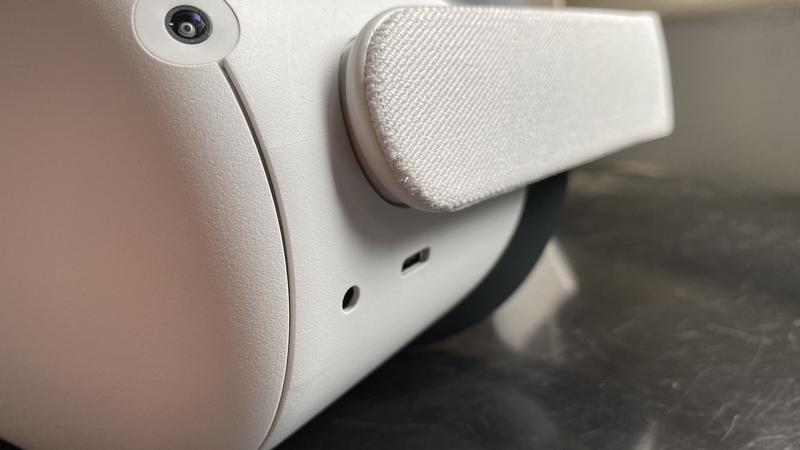
Display
Refined design aside, the biggest change to the Oculus Quest 2 is undoubtedly the display. It’s a fast-switch LCD display like its predecessor, but that’s where the similarities end; the Quest 2 has upped the resolution of the display, now equating to 1832 x 1920 per eye compared to 1440 x 1600 of the original Quest, and there’s also a 90Hz refresh rate on offer this time around too.
That’s a serious upgrade compared to the original Quest, and it’s immediately noticeable when you put the headset on. Everything, from text to textures and shapes look more detailed and defined, and that really helps improve immersion and that ‘forgot where I am’ feeling that virtual reality provides. Seriously – it’s a night-and-day comparison, and you won’t look at the original Quest, or any other VR headset, in the same way again.
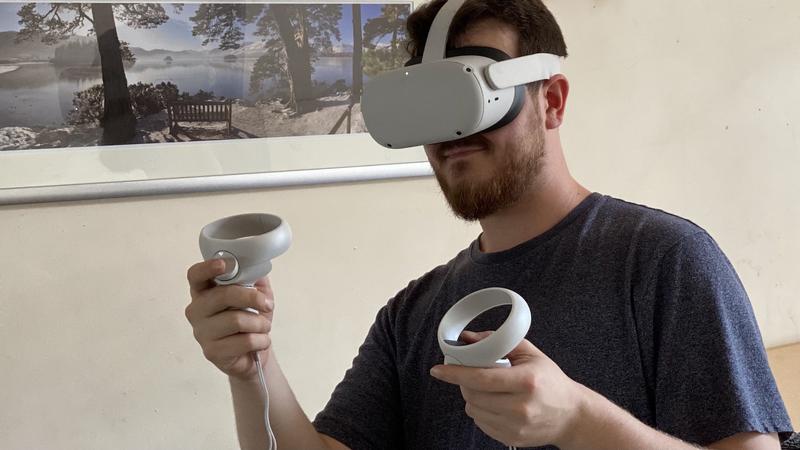
That resolution is an improvement not only on the Quest, but the Oculus Rift S (1280 x 1440 per eye), HTC Vive Cosmos (1440 x 1700 per eye) and even the Valve Index (1440 x 1600 per eye), making the Oculus Quest 2 one of the most capable mainstream VR headsets on the market in general, not just when it comes to standalone headsets.
The only downside is that it’s a single 3664 x 1920 panel this time around, opposed to the two displays of the original, and that presents a problem or two. The more eagle-eyed of you might’ve noticed I didn’t mention the IPD adjustment slider when discussing the various parts of the headset earlier, and that wasn’t an accident – it isn’t there anymore.
Instead, Oculus implemented a new system in the Quest 2 that makes you move the lenses yourself to adjust the IPD, and there are only three presets to choose from – 58mm, 63mm and 68mm. It’s a much less elegant option than the original, now requiring you to take the headset off to adjust the IPD then put it back on to see how it looks, but Oculus claims it simplifies a traditionally complex system, citing the fact that most consumers don’t know their IPD.
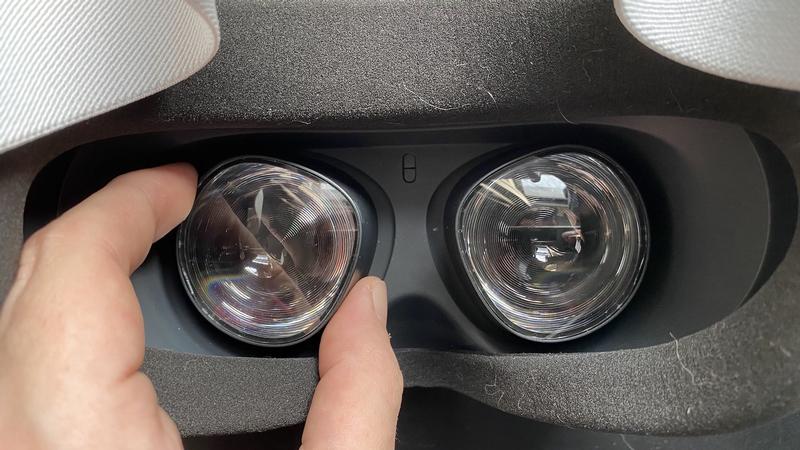
This way, Oculus claims, you can simply select the setting that provides the best visual experience and not have to worry about numbers. I understand the logic, but like I say, it’s a pain to adjust when you’re first using the headset, and it also means if your IPD is outside of the 58-68mm range, your VR experience will be negatively impacted.
Controllers and hand-tracking
Just as important as the headset are the controllers, and Oculus knows it. Following a radical redesign from the original Rift controllers to those that shipped with the updated Rift S and first-gen Quest, Oculus has again decided to change the form factor of the controllers with the Quest 2 – but this time, the changes are welcome.
Oculus essentially removed the thumbrest from the controllers when updating them for the original Quest, and that was a big complaint from VR fans – especially those that had the original Rift and knew what they were missing out on. Oculus heard the complaints, this time offering a larger thumb rest area next to the analogue sticks, and the controllers are generally a little larger than the originals too.
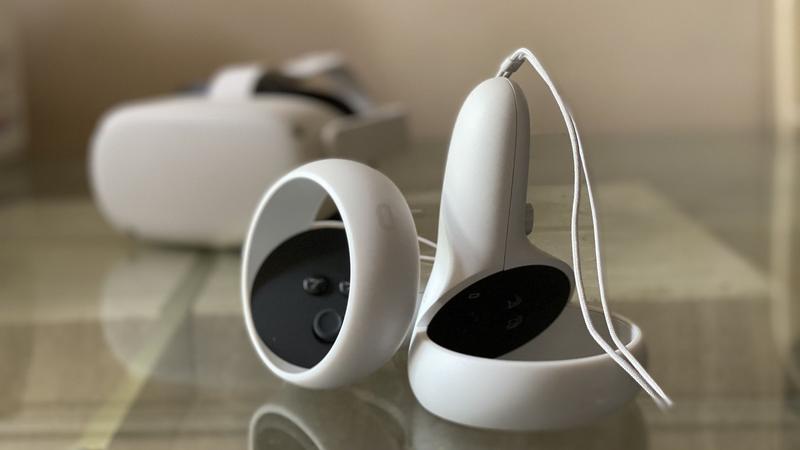
Design aside, there are other benefits to the updated controller, arguably most important being a boost to battery life. The original Quest controllers died a little too quickly, and that quickly became inconvenient – especially if you used disposable AA batteries to power the controllers. Oculus has done a lot of work behind the scenes and implemented a number of changes, like reducing the number of infrared LEDs in the rings, to offer a claimed 4x improved battery life.
That’s hard to verify of course, but after using the Quest 2 for a few weeks, I’m yet to replace the AA batteries in the controllers, and I certainly couldn’t say that of the original controllers.
There’s also a bunch of minor improvements, like improved haptic feedback and the controllers automatically switching on when you put the headset on, that improve the overall VR experience.
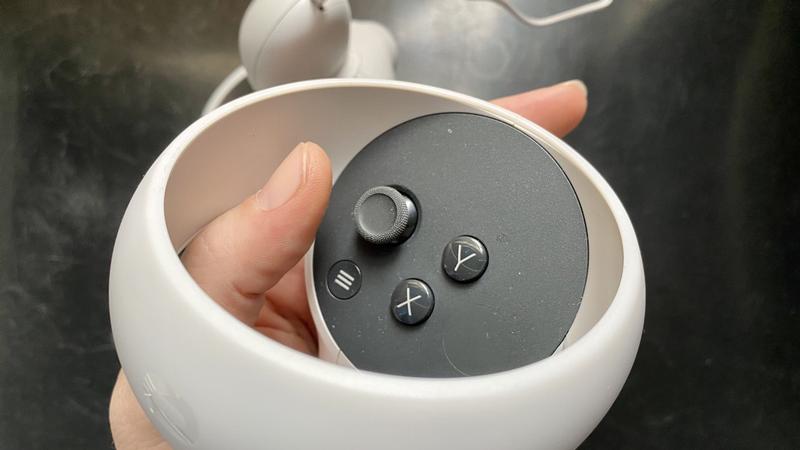
You’ve also got the option of ditching the controllers completely and using your hands to navigate the virtual space, thanks to the return of hand-tracking. Introduced after the release of the Oculus Quest in 2019, the headset uses the built-in cameras to detect and track your hands in real time, allowing you to use your hands to navigate the Oculus UI and even play games that support hand-tracking. The problem is, it wasn’t that great on the Quest, losing tracking and generally being a little awkward.
Though the layout of cameras hasn’t changed on the Quest 2, there does seem to be a noticeable improvement to hand-tracking – possibly due to the improved processing power available.
It’s much more stable this time around, and I don’t seem to have to be so obvious with my gestures when playing games like Waltz of the Wizard. It’s still best performed in well-lit environments, with performance quickly deteriorating with available light, but I’d certainly class it as a viable alternative if your controllers are dead and you want to watch a bit of Netflix in VR.
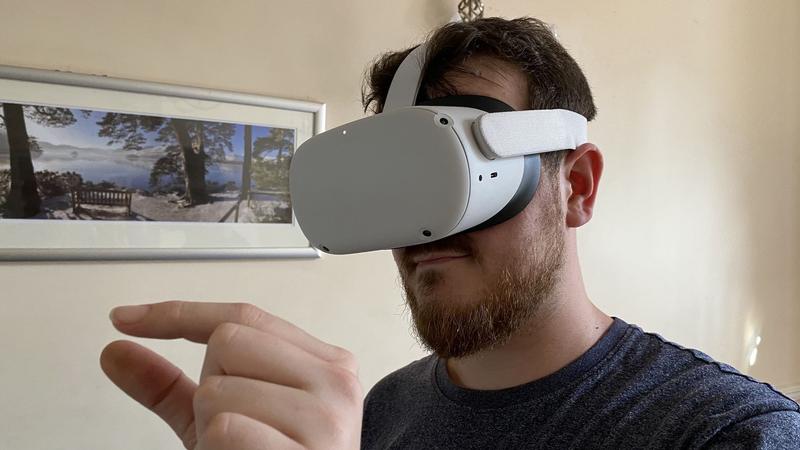
Performance
With the increased resolution and refresh rate on offer from the Quest 2, it’s obvious that Oculus had to include a more powerful processor. After all, unlike PC VR headsets, all the processing is done on the headset itself. Thankfully, Oculus has delivered, opting to feature the Qualcomm Snapdragon XR2 platform, with comparable performance to flagship smartphones in 2021. It can handle the improved display with ease, with no noticeable stuttering or lag at any point during my time with the headset, even during the most intense Beat Saber sessions, but the XR2 is much more important than that.
You see, Oculus is so confident of the XR2’s capabilities that it claims the VR games and experiences available on the Quest 2 will likely expand in new ways to take advantage of the extra power on offer. The company didn’t give any specifics in questioning, but it’s likely that we’ll see longer, more detailed VR games appear on the headset over the coming months and years.
Alongside the Snapdragon XR2 you’ll find an increased 6GB of RAM and either 64- or a whopping 256GB of internal memory, depending on the variant you go for. It’s worth noting that storage space is the only difference between the two versions of the Quest 2, with identical hardware in every other respect.
One area that hasn’t changed is battery life, offering around two to three hours per charge depending on what you’re playing. For me, that’s more than enough, but there will be people out there that want to live and breathe VR all day, every day. The good news is that Oculus is launching the £129/$129 Quest 2 Elite Strap with Battery and Carrying Case with the aim of doubling the battery life of the headset, although I haven’t had a chance to see it myself, so I can’t comment on just how effective it is.
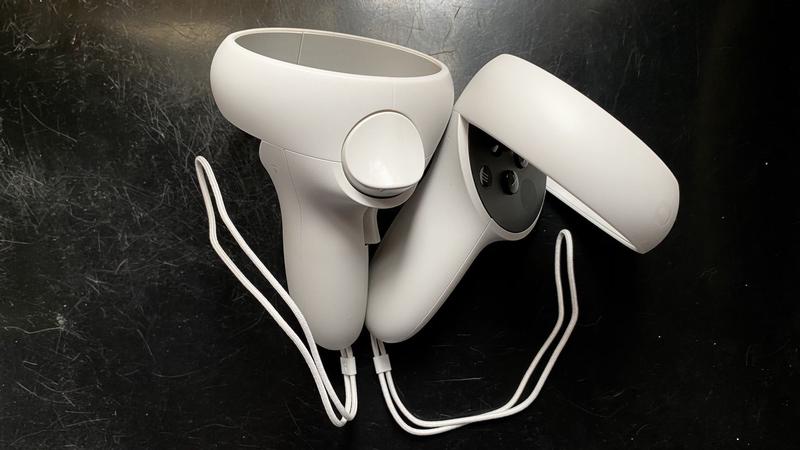
Let’s take a minute to talk about tracking: like its predecessor, the Quest 2 uses the Oculus Insight system to intelligently calculate the position of the headset and controllers in real time. It’s an impressive feat, but as existing Quest owners can attest, it’s not always perfect.
You’ll need to be in a well-lit environment for the four on-board cameras to correctly calculate its position, but more importantly than that, your hands won’t be tracked if they’re out of view of the cameras – behind your back, for example. That may seem niche, but there’s a swathe of VR titles on the Quest that require you to reach behind your shoulder to access weapons and other gadgets, so it’s something you’ll likely experience often.
It does use the built-in sensors to estimate its position in the physical space, but it takes a split second to regain full tracking upon redetecting the controllers, and that can make all the difference in a gritty competitive shooter like Onward.
It’s not a problem exclusive to the Quest – it’s also a problem with the Oculus Rift S and the HTC Vive Cosmos – but unless you want to set up a dedicated play space with trackers placed around the room to completely capture movement, à la the Vive Cosmos Elite, it’s a compromise you’ll have to put up with.
Don’t get me wrong, it offers impressive 1:1 tracking and works flawlessly most of the time, but there are occasions where it might get a little confused.
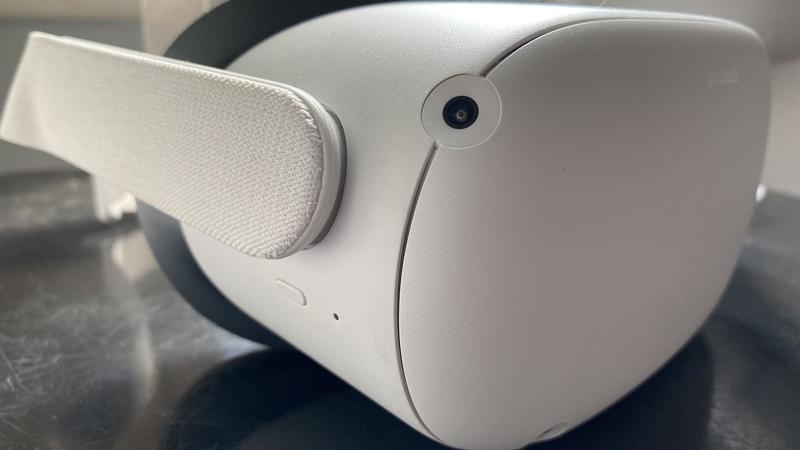
Content & Oculus Link
Back when the Oculus Quest first launched, there wasn’t an overwhelming amount of content available. But still, that didn’t deter consumers, and the growing fanbase has resulted in a growing number of games and experiences being tailored to the standalone headset. Fast forward to today and there are over 200 apps and games…
